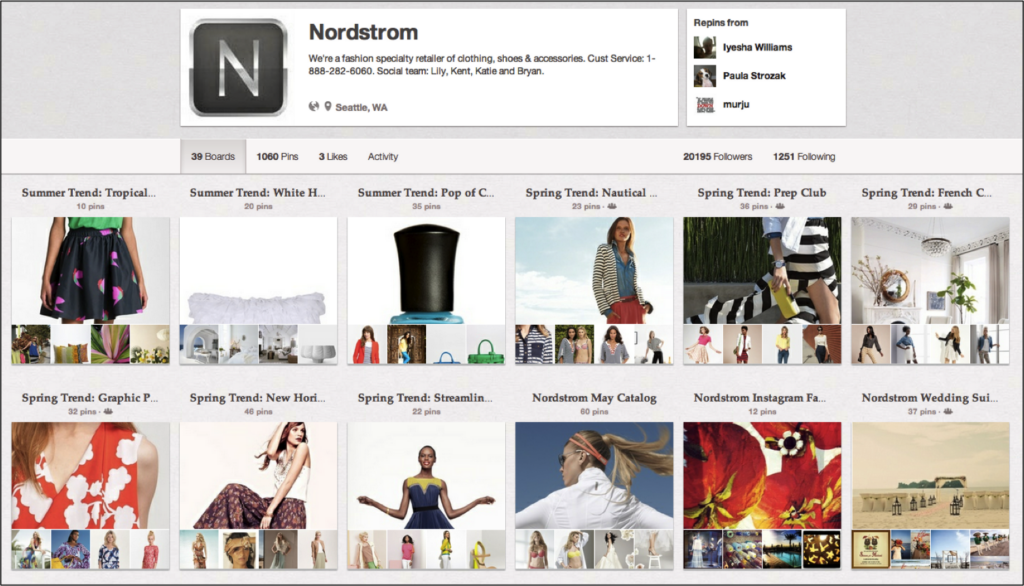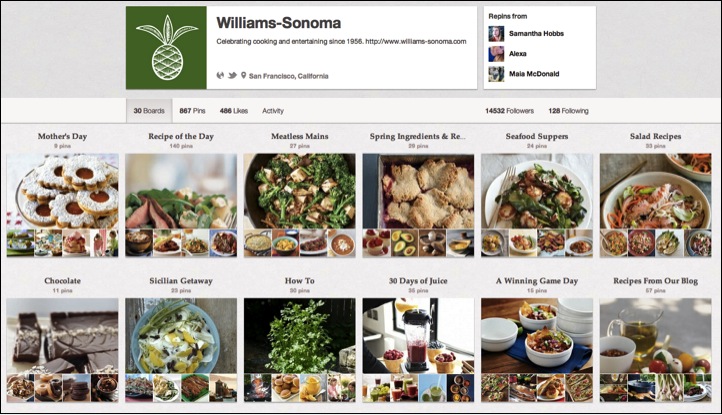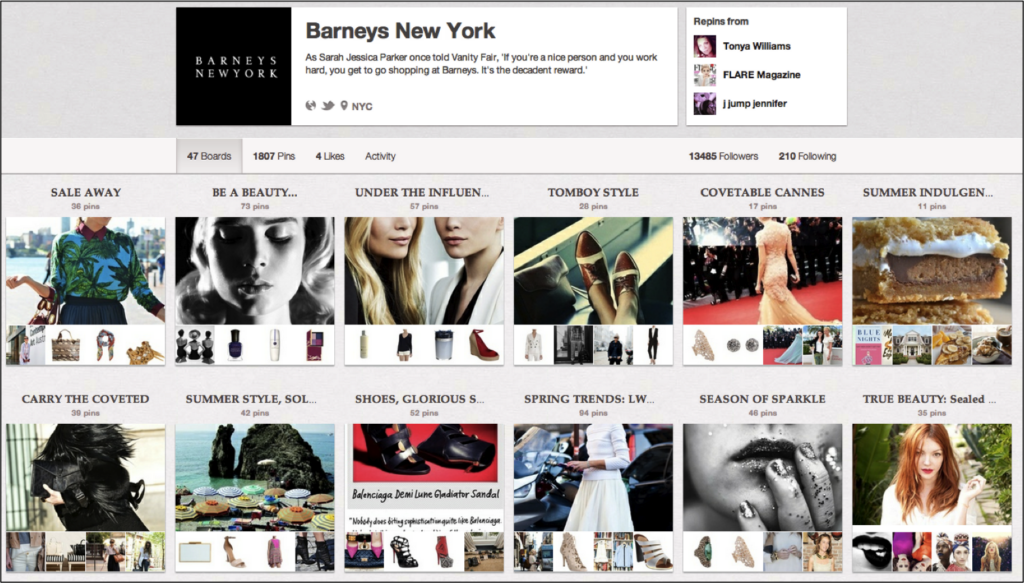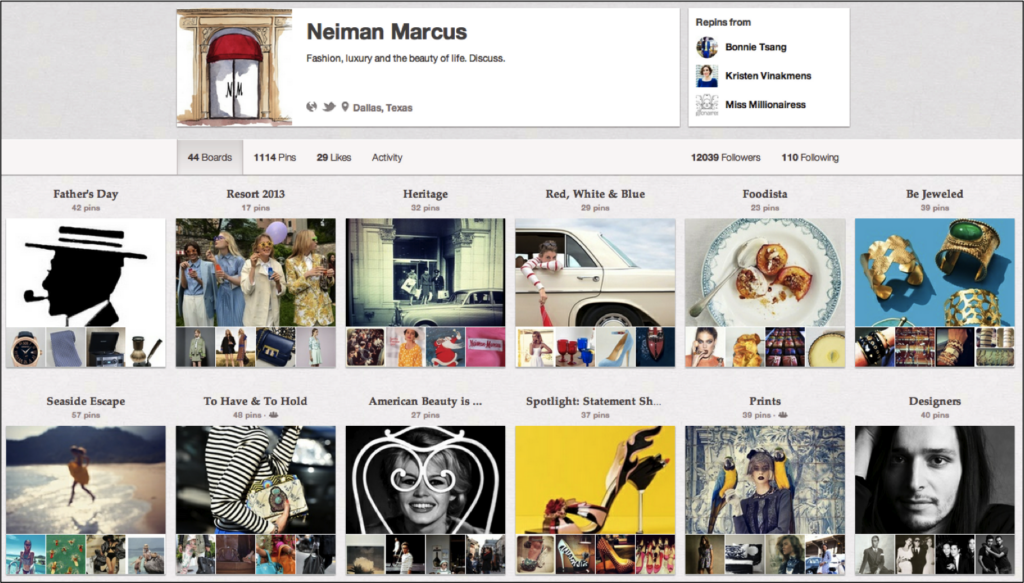 With over 100 million monthly visitors, Pinterest is now the 3rd largest social network after Facebook and Twitter (Forbes). For retailers marketing to consumers online, it’s become an essential social marketing and engagement channel. According to the 2012 Social and Mobile Commerce Study, consumers use Pinterest more than Facebook or Twitter to engage with retailers and follow an average of 9.3 retail companies.
With over 100 million monthly visitors, Pinterest is now the 3rd largest social network after Facebook and Twitter (Forbes). For retailers marketing to consumers online, it’s become an essential social marketing and engagement channel. According to the 2012 Social and Mobile Commerce Study, consumers use Pinterest more than Facebook or Twitter to engage with retailers and follow an average of 9.3 retail companies.
When planning your Pinterest strategy, it is helpful to consider what other successful B2C and retail marketing pros are implementing and how it leads to their success. Fortunately, the leading five of the Top 250 Internet retailers are flush with great big name brand Pinterest marketing examples. There’s plenty that mid-size companies, smaller businesses and start-ups could learn from these long-established brands. Read on to learn 5 lessons from the top 5 retailers on Pinterest.
#1 – Highlight Your Products

Nordstrom department stores specialize in high-end fashion and the same can be said for their Pinterest strategy. Their boards feature the same upscale attire that appears in their catalogue and in stores. These aren’t all just items showcased against stark white backgrounds, many of the pictures are from outdoor and on-location photos shoots or fashion shows, making for some compelling imagery. Take some tips from Nordstrom and pin beautiful photos of your products to your brand’s Pinterest page.
#2 – Accentuate Your Content

Though Williams-Sonoma’s primary offerings are all that one would need to cook amazing meals and make a house a home, one of the more valuable features of the brand’s website is its recipes section. Recipes and cuisine photos are extremely popular on Pinterest, so images of the great food people can make with the tools this company offers lure people to Williams-Sonoma’s pinboards, then on to the website to see the recipe. Like this company, shine a spotlight on your original content in your pinboards.
#3 – Pin Other People’s “Content”

Barney’s New York has been a destination for clothing cognoscenti since 1923. That confidence shines through in its pinboards, as many of them do not display items that can be purchased at Barney’s. Some of the brand’s pinboards even focus on food or interior design. That’s not an accident, as these “home” categories are very popular on Pinterest and could attract pinners that may not be familiar with Barney’s – yet. Bottom line? Share and share alike! Offering a wide array of content may entice viewers you might not otherwise have the chance to attract.
#4 – Consider Unique Themes

In the time since Campalyst released its top 250 list, Neiman Marcus has moved from the fifth slot to the fourth. One reason why this fashion-oriented page is so popular may have to do with its great themes. Topics such as Shoes, Handbags or Spring Fashion are obvious. Neiman Marcus pinners fancy Neon, Colored Pants, Yellow, Lovely Layering, The Ponytail. These simple concepts can carry across different categories (a yellow handbag could appear on the same board as a yellow dress) and may appeal to different buyer personas. Be like Neman Marcus: Broaden your pinboard topics and think thematically.
#5 – Incorporate Social Options

They may have more followers, but the top four retailers haven’t integrated social media to the same extent as Vera Bradley. This brand has been diligent about cross posting items from Facebook, Flickr and YouTube to Pinterest. Additionally, when you shop the Vera Bradley webpage, there are Pinterest and other social buttons on the product pages so visitors can share their finds with friends. Vera Bradley shows your social channels shouldn’t stand alone; make them work together to reach more potential customers.
These techniques should be enough to get you started towards marketing your consumer brand more effectively on Pinterest. As with all social and content marketing efforts, be sure to learn as you go, evaluate your strategies, make adjustments as needed and use tools that can make using Pinterest easier.
Are you an avid Pinner? What tips could you share for making an impact with consumers on Pinterest?


